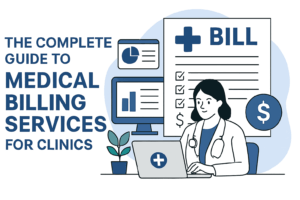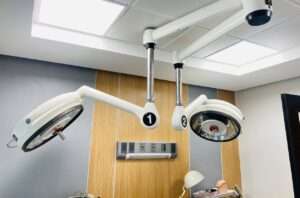Medical coding
Medical coding is an important part of the healthcare revenue cycle, and for companies like Digital Med Billing Solutions (DMBS), it is the foundation of their operations. This process entails translating the diagnoses, treatments, procedures, and services provided to patients into standardized codes that insurance companies can understand and process. These codes ensure that healthcare practitioners are correctly and efficiently reimbursed for the services they deliver. The medical coding procedure at DMBS is rigorous and organized, with numerous essential steps.
The first step in the medical coding process at DMBS is the collection and review of patient records. These documents include doctor’s notes, diagnostic test results, and any other pertinent medical evidence. The DMBS coding team is in charge of ensuring that the documentation is complete and accurate, as missing or confusing information might result in coding errors that affect payment. Coders must also ensure that the paperwork supports the services billed, which is critical for meeting payer rules and regulatory requirements.
Once the documentation is verified, the next step involves the assignment of appropriate codes. DMBS utilizes a variety of coding systems, the most common being the International Classification of Diseases (ICD) codes, Current Procedural Terminology (CPT) codes, and the Healthcare Common Procedure Coding System (HCPCS). ICD codes are used to describe diagnoses, CPT codes are used to describe medical procedures and services, and HCPCS codes are used for billing Medicare and Medicaid patients. Coders at DMBS must be proficient in these coding systems and stay up to date with any changes or updates to the codes, as these can occur frequently. The assignment of codes requires a deep understanding of medical terminology, anatomy, and physiology, as well as the ability to interpret the physician’s documentation accurately.
DMBS’s coding approach includes a robust quality assurance (QA) step. Once the initial coding is completed, it is subjected to a QA review to guarantee accuracy and compliance. This phase is critical because even slight coding errors can result in claim denials, payment delays, or compliance concerns that are costly for both the healthcare provider and the DMBS. During the QA phase, a senior coder or coding auditor will evaluate the assigned codes to ensure they match the medical documentation and follow payer-specific coding standards. This stage also assists in identifying any potential upcoding or under coding, which could lead to legal and financial consequences.
Once the coding is complete and passes the QA process, it is sent to DMBS’ billing team. The billing team prepares and submits reimbursement claims to insurance companies using the coded information. This procedure entails ensuring that the claims are accurate, complete, and submitted on time. The billing staff at DMBS also handles claim follow-up, which includes responding to insurer inquiries, appealing refused claims, and ensuring that payments are received and handled accurately.
Summary:
To summarize, the medical coding procedure at Digital Med Billing Solutions is a difficult and detail-oriented operation that necessitates a high level of skill and precision. From evaluating patient records to assigning appropriate codes and maintaining compliance through quality assurance, each step is crucial to ensure that healthcare professionals are properly reimbursed for their services. DMBS’s rigorous approach to medical coding not only helps to maximize reimbursement for healthcare providers, but it also assures regulatory compliance, which is critical in the ever-changing healthcare business.










